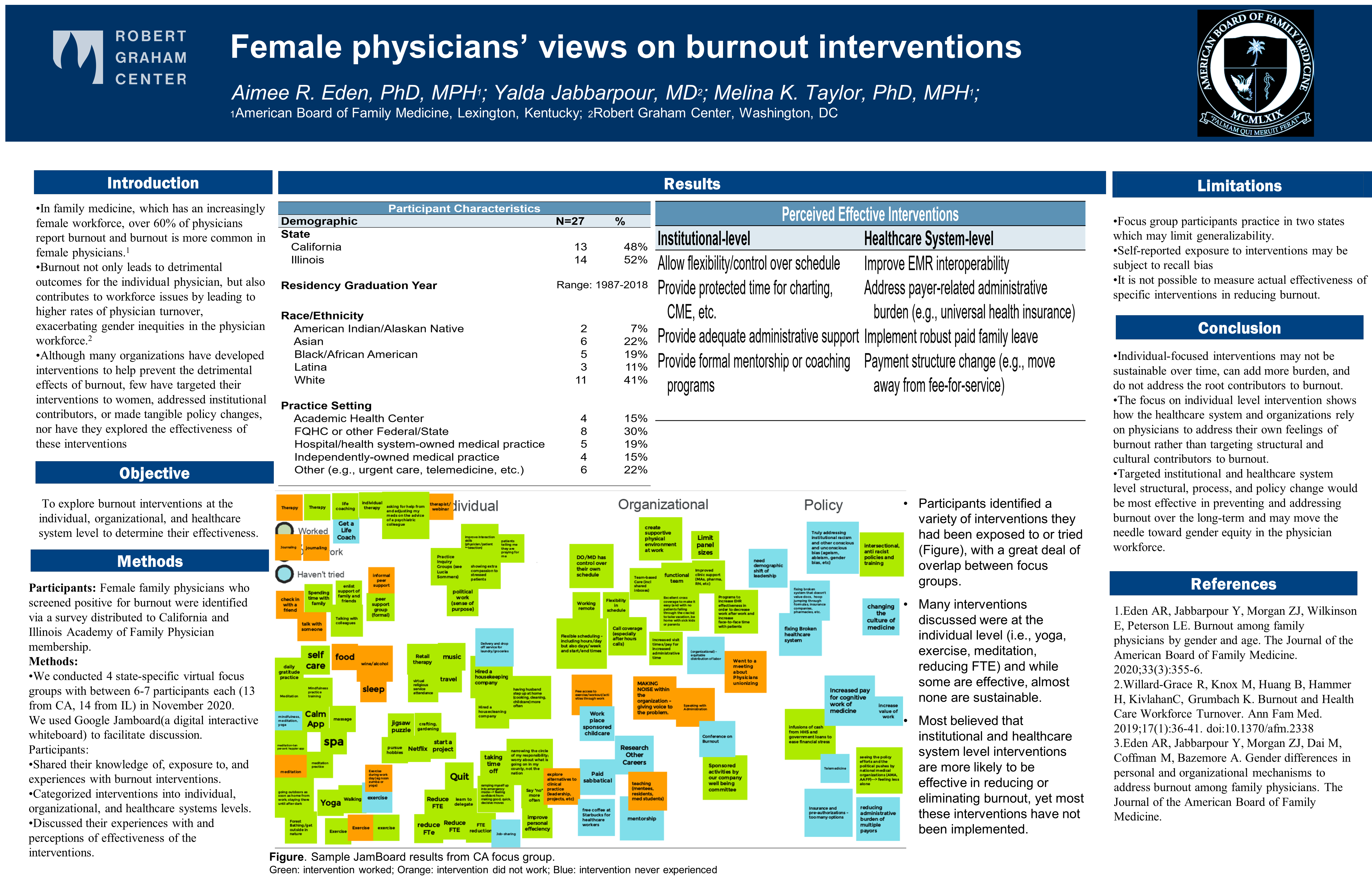PRP039: Female Family Physician Perspectives on Burnout Interventions
Aimee Eden, PhD, MPH; Melina Taylor, PhD, MPH; Yalda Jabbarpour, MD
Abstract
Context: The family medicine workforce is becoming increasingly female, and early career female family physicians experience higher rates of burnout than their male counterparts. Burnout not only leads to detrimental outcomes for the individual physician, but also contributes to workforce issues by leading to higher rates of physician turnover, exacerbating gender inequities in the physician workforce. Although many organizations offer interventions to help reduce burnout, few have targeted their interventions to women, addressed institutional contributors, or made tangible policy changes; nor have they explored the effectiveness of these interventions if implemented. Objective: To explore the experiences of female family physicians with individual, organizational, and healthcare system-level burnout interventions at the to determine perceived effectiveness. Study Design: Qualitative study using focus group interviews. Setting: Female family physicians participated in a 90-minute virtual focus group via Zoom. Population studied: Female family physicians practicing in California or Illinois who reported burnout. Outcome Measures: Female family physician personal experiences with and perspectives on interventions to reduce burnout. Results: Preliminary results show that participants identified a large variety of interventions they had been exposed to or tried. Although many of the interventions discussed were at the individual level (i.e., yoga, exercise, meditation, reducing FTE), participants believed that organizational level (i.e., autonomy in work, formal mentorship programs) and system/policy level (i.e., moving away from fee for service, reducing administrative burden related to payers, robust paid family leave) interventions were more likely to be effective in reducing or eliminating burnout. Female family physician experiences with and perceptions of various types of and levels of interventions aimed at reducing burnout will be reported.

Emily Godfrey
godfreye@uw.edu 11/20/2021Thanks for this important work. I was wondering if there are other examples (perhaps in different countries) where there are policies in place that help reduce burnout in female physician primary care workforce. It will be interesting to see with states with supportive state family leave (WA state started in 2020) - to see if there are in fact lower burnout rates over time.